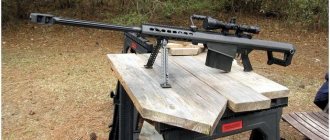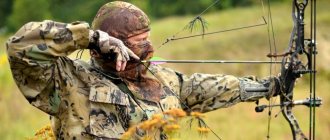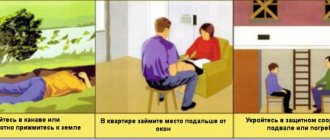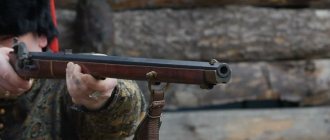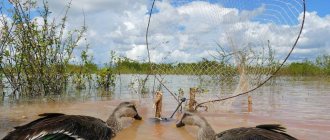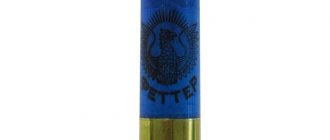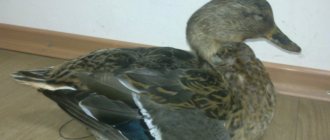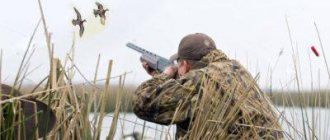Selecting weapons for duck hunting
Ducks are considered cautious and vigilant birds, so it is not advisable to approach them closer than 45–50 meters during duck hunting. You can simply scare them away. They have to wait for prey at a distance.
Duck hunting rifles do not have their own category. You can successfully shoot a duck with any hunting weapon if you choose the right shot. The gun consists of a barrel with specially located holes for the choke or choke constriction.
For duck hunting, the gun must meet the following requirements:
- it was convenient for shooting at a distance;
- increased combat accuracy;
- large capacity of shot in the projectile;
- It is desirable that there is a noticeable weight of the weapon.
The longer the barrel of a gun, the better it ensures the accuracy of the shot when fired. This principle is necessary for long-distance shooting when hunting game in ambush. Hunters prefer multi-shot weapons or use double-barreled shotguns with an ejector mechanism for duck hunting, which can be quickly reloaded if necessary.
When choosing equipment, you need to consider what time the hunt will take place:
- In summer, preference is given to mobile models that can be easily moved (weight no more than 3.5 kg, and trunk length about 75 cm). The following models are suitable: TOZ-25, TOZ-34, MR-94, IZH-27. You can also consider modern versions of the M-153 and M-155 for hunting in the summer.
- In the autumn, hunting is considered calm; ducks are waited for in ambush and lured there with a variety of baits. By autumn, the bird gains additional fat, so more penetrating force is required, and the accuracy of the shot must be wider. When the ducks have taken the bait, you need to hit as many targets as possible with one clear shot.
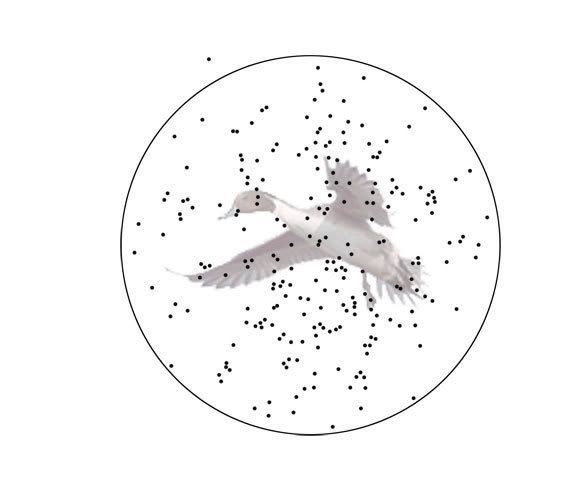
Even if you plan to shoot several carcasses at once, you need to aim at one target.
The following models are suitable: with a longer barrel up to 80 cm, it is advisable to use double-barreled shotguns, but whether it will have triggers or not, horizontal or vertical - this is up to each hunter to choose a convenient shotgun for himself. Attention should be paid to the selection of cartridges.
Shot for hunting
A very pressing question arises for beginners regarding which shot should be chosen for hunting. No hunter will give an exact answer to this question, just like with a gun, you need to choose the cartridges for yourself. The majority of hunters tend to use shot from No. 4 to No. 7. So which shot number should you choose for a duck? This depends on the time of the hunt and the size of the intended game.
It is believed that No. 5 is duck shot. Many hunters use it in the spring, but it is not considered suitable for every bird. For example, for small teal you can use No. 7. Some hunters are inclined to use No. 4 shot for hunting at different distances. So when choosing a fraction, you need to try in practice which number is best.
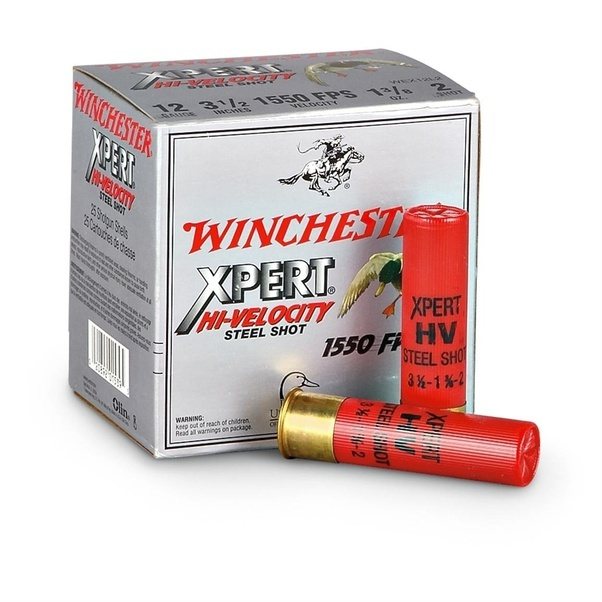
The main thing here is to observe the ratio of gunpowder and shot. If the hitch is chosen incorrectly, then there is a possibility of wounded animals that will fly away from the hunter.
Ammunition
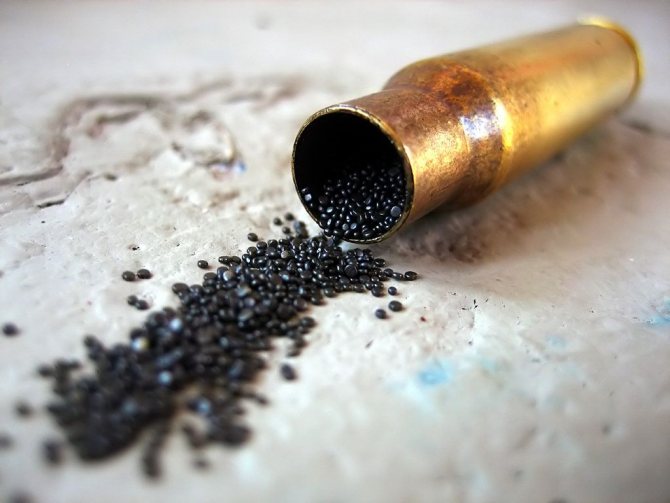
What shot to shoot at ducks? The issue has long been resolved. The most appropriate solution is to use ammunition in the range of sizes 2 to 7. Young birds, which have fragile feathers, are usually shot with shot No. 6. In-flight fire is best done with ammunition No. 5.
Hunters who prefer high-charge cartridges are recommended to use high-quality polyethylene wads. The latter increase the circumference of the shot scree. This ammunition will be especially effective in the evening, when visibility is noticeably reduced.
Features of fractions in spring
Depending on the time of hunting, you need to choose a different shot number for the bird. This is necessary for more accurate destruction of the carcass so that no wounded animals remain.
| View | Fraction number |
| Wigeon, red-headed and white-eyed pochard, gadwall, mallard | 4 and 5 |
| Red duck, blue duck | 4 |
| Teal, lutok, shoveler | 6 |
However, it is worth remembering that spring hunting is a rare occurrence and is not permitted in all places and regions.
Features of fractions in autumn
By the autumn season, ducks have time to gain weight, so the shot should be selected based on new factors. After all, the correct choice of shot directly affects the outcome of the hunt.
| View | Fraction number |
| Wigeon, red-headed and white-eyed pochard, gadwall, mallard | 4 and 3 |
| Red duck, blue duck | 4 and 5 |
| Teal, lutok, shoveler | 6 and 5 |
Calculates leads
If a beginner is trying his hand at hunting, then he needs to figure out how to calculate the lead when shooting at a duck and other flying birds. The calculation is simple: the flight speed is multiplied by the speed of the shot. However, this does not mean that you will dream of calculating these indicators during a hunt. You need to keep this data in your head and make decisions quickly. The data from the table will help for the calculation.
| Bird species | Flight speed, m/s |
| Capercaillie and black grouse | 15–18 |
| Teal | 18–35 |
| Duck | 21–27 |
| Mallard | 18–27 |
| Partridge | 13–14 |
The necessary data for calculating the lead is also considered to be the flight speed of the shot; depending on the distance to the duck, the speed changes.
| Fraction number | Speed fractions m/s in depending on distance to target | |||
| 20 m | 30 m | 40 m | 50 m | |
| №1 | 0,06 | 0,10 | 0,14 | 0,18 |
| №3 | 0,06 | 0,10 | 0,14 | 0,19 |
| №5 | 0,06 | 0,10 | 0,15 | 0,20 |
| №7 | 0,07 | 0,11 | 0,16 | 0,22 |
| №9 | 0,07 | 0,11 | 0,17 | 0,24 |
Using these data, calculating the lead when shooting at a duck is quite simple, just remember that the speed of a frightened game may differ from the standard flight.
About choosing a weapon
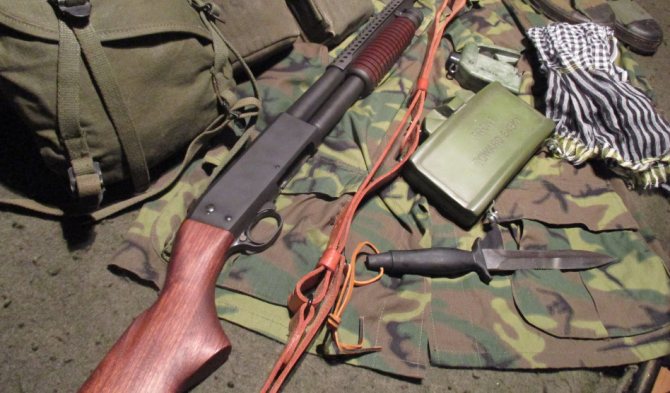
Successful duck shooting is largely determined by choosing the right gun. A weapon equipped with a long barrel allows for increased accuracy of ammunition dispersion. This property provides the ability to conduct targeted fire from a considerable distance. The presence of a short barrel contributes to successful hunting at short and medium distances. In this case, there is a significant scatter of the fraction.
How to shoot ducks correctly? Skilled hunters advise beginners to fire intensely at an increased pace. This can be achieved through the use of a repeating shotgun. As an option, you can give preference to a double-barreled ejector-type weapon, which helps to increase the reload speed.
How to aim at a stationary target
How to properly aim at a duck while stationary (on water or land). Hunting such ducks is not particularly difficult. Take into account some moments when a duck hits the sight. If she is in the water, then you should aim at the point where her body and the body of water come into contact. It must be remembered that 1/3 of the carcass is in the water at this time; due to the small area to hit, the shot must be accurate.

However, it is not easy to hit such a target, since in this position they are smaller than flying ducks. They have a thicker layer of plumage on their chest (in a sitting position), so it is not advisable to aim there. It is recommended to aim for the head, side or back.
If duck hunting is on the shore, and they are calmly walking along the shore or standing, then it is better to aim at the center of the carcass. However, you should not expect to hit a sitting duck from a long distance; such a target will most likely escape.
Accurate shooting at a flying duck
Accurately shooting at a flying duck is not an easy task, and solving it will require some experience. There is no specific “recipe” for accurate shooting. This is due to the fact that “duck hunting” is too general an expression. There are a lot of species of ducks themselves, they have different habits, manners and flight speeds. There are even more places for hunting, each new place makes certain adjustments for shooting. We stand on a hill and shoot at teals, or climb up to our chests into the water and shoot mallards. Generally speaking, “duck hunting.” And from the point of view of sports, they are completely different disciplines. The accuracy of the shot is affected by: wind speed, illumination, ambient temperature. Among other things, the accuracy of a shot is affected by the size of the shot, the weight of gunpowder and the muzzle constrictions, plus a hundred minor factors. But it's not all that complicated. Believe me.
Start preparing at home. There is one very good exercise. Wear the clothes you plan to hunt in. Choose a target (the clock on the wall of the room is best) and quickly raise the gun. Look what happened? Did you see how crooked it is? For this reason we miss. Make sure that your aiming line does not “walk” when you throw up. After this, repeat this exercise, periodically closing your eyes. After jumping up with your eyes closed, what happened? Crooked again? Achieve permanent results. Practicing at home for 15 minutes each day will greatly help you develop this key shooting skill.
Leading when shooting ducks is the most difficult process that cannot be described in words. General recommendations are: aim for the duck's beak and do not stop the lead of the gun before shooting. It is better to let ducks fly towards you. Shoot the moment they are above you. There is no need to take lead; aim for the first third of the body. Shoot the stolen targets a little higher, aiming for the “tuft” on the duck’s head.
Lately I have often been asked whether it is worth visiting a shooting range? Without a doubt - yes, a very useful thing in the off-season. Sports activities are very good. One detail: choose a stand where one of the staff will help you point out mistakes when shooting and give recommendations on how to correct them.
You will learn all other tips after your hunting trips. Experience and only experience!
The subtleties of shooting while a duck is in flight
Hunting a duck in flight is different from hunting a stationary target. The hunter has to calculate many factors that influence an accurate hit. So how do you properly aim at a duck in flight?
The first thing you need to understand is the principle of the totality of actions. You need to shoot ahead, since the shot takes time to reach the target, and the duck continues to move at this time.
There are main types of duck shooting:
- counter;
- stolen;
- lateral;
- semi-hijacked.
It is believed that it is best to shoot the bird halfway, as the resistance of the feathers has less effect on the shot. However, if the hunt takes place in the summer, after molting, then the bullet will not encounter strong resistance.
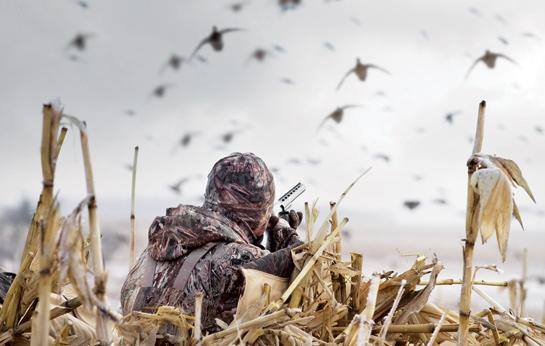
Every hunting trip is not complete without shooting at a duck. At first glance, it seems that hunting for a moving target at the human level and shooting a duck in flight is somehow not very difficult. However, this opinion is erroneous; often the duck avoids the shot. In this case, attention should be paid to increasing the distance, due to which the magnitude of the speed drop changes. Basically, the flight speed of a duck is 15 m/s. However, the data is inaccurate, since a duck can increase it from fright.
But the accuracy of the shot is affected not only by the speed at which the duck moves away, but also by the location of the bird. By shooting at the tail, the area affected by the duck is insignificant, and the wounded animal can escape.
Despite the difficulties in shooting, beginners still have a better chance of hitting a retreating bird than hitting a side target. This method of shooting at theft is considered ideal. Less than ideal conditions predominate in the total number of shots fired. Then the hunter has to take decisive action in a short time to ensure that the shot is successful.
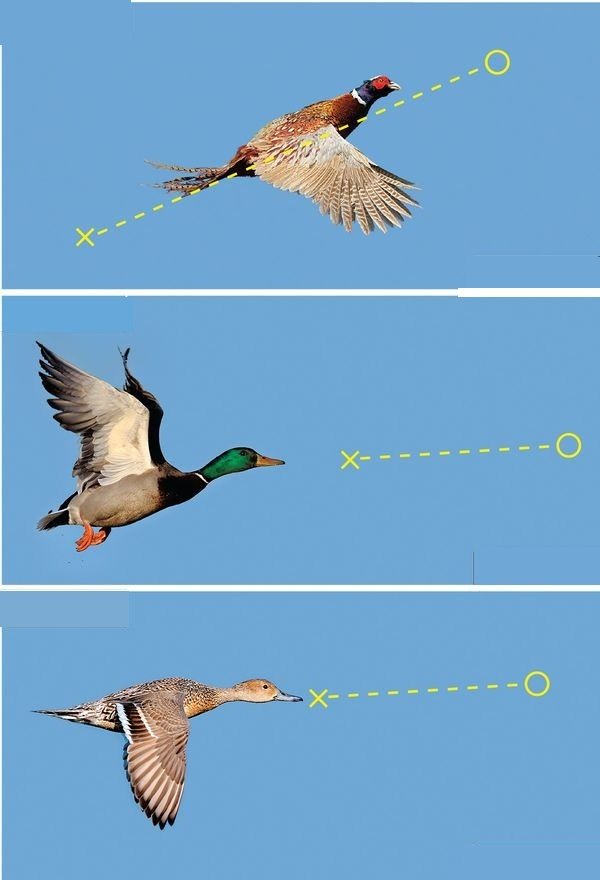
Lead when shooting a duck
Duck hunting is considered the most widespread. In swamps, lakes, and river bays you can meet thousands of hunters waiting for the morning or evening duck dawns. In this case, shooting is carried out from one place where the hunter is sitting in a barrel, boat, or hut. It is worth remembering that it is much more convenient to shoot while standing. Therefore, disguise yourself so that the hut, when you stand, only reaches your chest in height and does not interfere with 360-degree shooting.
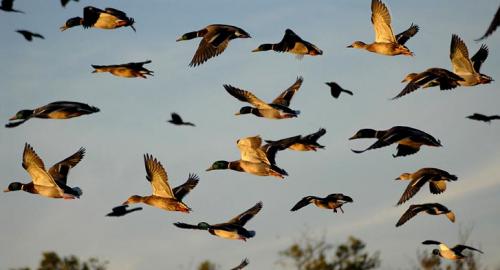
If you are shooting at dawn, or on a flyby, then you can hunt for oncoming, stolen, side and half-creeped birds. There is an opinion that it is best to hit the bird under the feather, in a half-run, then the feather cover produces less resistance before the shot. However, in August, when the duck is still young and has weak cover, you have the opportunity to get into the most lethal places - the head and neck.
A young duck can easily be killed with seven. If you go hunting in the late period, then you need to increase the shot number.
Let the duck as close to you as possible, close it with the trunk and start walking forward, and then press the trigger. If you suddenly miss, you should turn around and hit under the duck. Such a shot is called a hijack shot.
For a side shot, use the direction from right to left or from left to right. Remember that during a shot from the left, the body spins, and during a shot from the right, on the contrary, it twists.
If you pick up a side duck, point your barrels straight at it and start overtaking until a gap appears. The clearance depends on the target range, as well as the bird's flight speed. It is known that diving breeds have a much faster flight speed than gray or mallard ducks. There are also legends about the incredible speed of teal. The essence of overtaking shooting is that the gun moves faster than the bird flies. But remember that you should not throw the trunks forward with a jerk. Otherwise, the gun may stop and result in a miss.

If you are shooting at a duck that is about to land, it is best to point the barrel at the landing bird. Fire the shot, moving away from her in a downward motion.
They usually shoot from the entrance or approach at a duck that takes off. When flying out of the reeds, the bird immediately begins to rise vertically. In such a case, you just need to close it with the barrels and press the trigger. When the duck has switched to horizontal flight, shooting should be from the side or overhead, while the barrel must be raised slightly higher than the body.
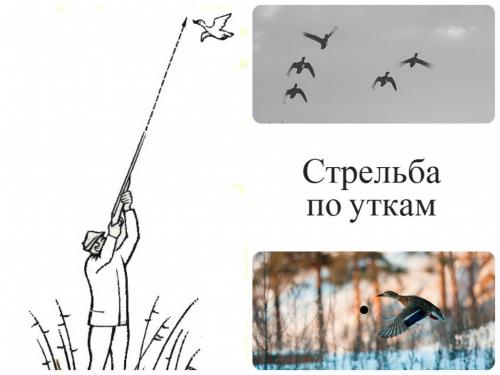
Main shooting points
To make hits accurate, you need to aim at a flying duck, as the simple rules say:
- If the duck moves away from the hunter opposite the shoulders, then you need to aim straight at it.
- If she flies below shoulder level, then we select a target in front of her.
- When a bird flies upward, you need to aim as if covering it with the muzzle over it. The hunter's body moves with the target, only after the shot does the movement stop.
- The bird moves forward over the hunter. The sight is aimed under the bird, slightly ahead of it.
- The duck flies high towards the hunter. The sight is taken slightly in front of the duck, covering it with the barrel.
- When the duck heads sideways and gains altitude, the sight should be aimed above the bird and slightly ahead of it. With this option, double anticipation is necessary.
- When a duck sits down, the shot point is located under the duck in advance.
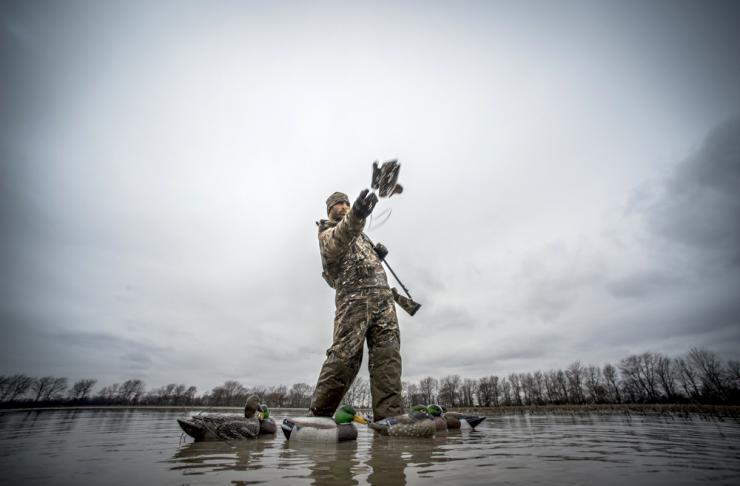
Hunting is a very exciting activity, but you can’t just go hunting; you need to understand the simple principles of how to properly aim at a duck, track and wait for it, and be able to choose the right weapon and cartridges. By following all the rules together, you can not only enjoy the hunt, but also get the long-awaited trophy.
Specifics of shooting at a sitting duck
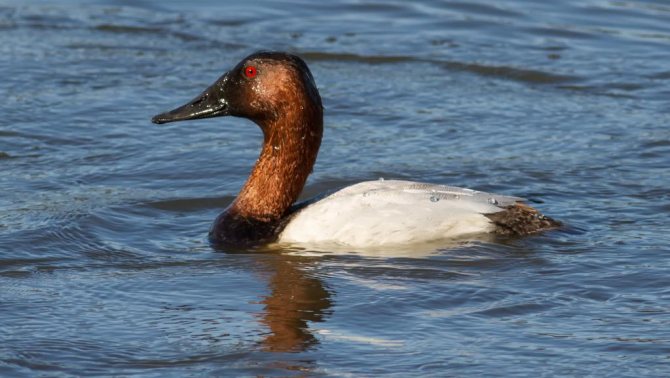
Aiming at a bird that is on the ground is much easier than aiming at an aerial target. However, there are a number of important aspects that deserve attention from the hunter.
What to do if a duck is spotted on the water? When the bird swims, about a third of the carcass is hidden from view. A conditional line of contact is formed between the surface of the water surface and the body of the individual. Point the weapon's front sight at the central part of the indicated contour, which will significantly increase the chances of hitting the target.
Shooting a duck that sits on the shore also has its own specifics. Consider the fact that in autumn and spring the bird’s body is covered with a thick layer of dense plumage in the sternum area. It is better to avoid aiming the front sight at the presented area. As a target, choose the side of the body, head, back. It is these places that turn out to be the most vulnerable. It is advisable to try to quietly get as close to the bird as possible, you can read in detail how best to do this in the article: https://www.syl.ru/article/155045/new_osennyaya-ohota-na-utku-osobennosti-ohotyi-na-utok- i-gusey.
